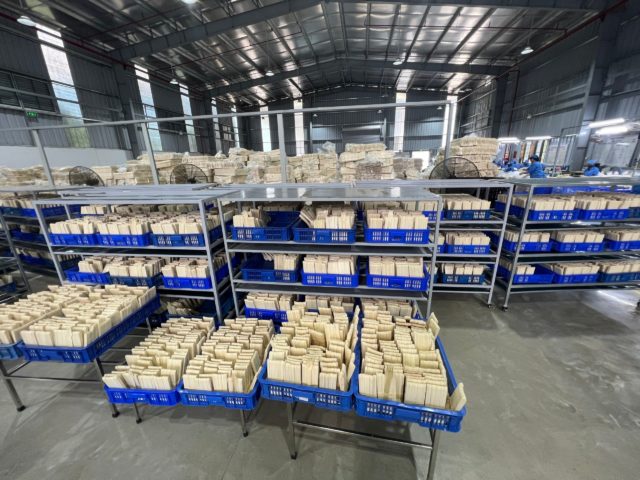
Vietnam has become a leading export country of wood and wood products in the world. On the international scale, Vietnam has been the 5th biggest wood exporter in the world ranking, the 2nd in Asia and the 1st in Southeast Asia. Although Vietnam has become a leading export country of wood and wood products, Vietnam’s wood furniture export turnover currently accounts for only 7% of the global market share. Given that the world’s furniture trade market is large, with a total transaction value of about USD 405 billion per year, with an import demand for wood and wood products of about USD 230 billion, the room for the development of the wood processing industry is still very large, especially for furniture, which is a strong commodity of Vietnam. The export value of wood and wood products from Vietnam was USD 17.01 billion in 2022, up by 7.1% compared to 2021. However, this increase is much lower than businesses’ expectations in recent years, especially compared to 2021 when they increased by 19.8%.
 Wood Processing and Products: The wood industry in Vietnam involves the processing of timber and wood products, including plywood, particleboard, MDF (medium-density fiberboard), wood furniture, wood flooring, wooden toys, and other value-added wood-based products.
Wood Processing and Products: The wood industry in Vietnam involves the processing of timber and wood products, including plywood, particleboard, MDF (medium-density fiberboard), wood furniture, wood flooring, wooden toys, and other value-added wood-based products.- Timber Resources: Vietnam possesses abundant timber resources, both natural and plantation-grown. These resources are utilized for plywood and other wood product manufacturing.
- Plywood Production: Plywood is a major product of the wood industry in Vietnam. The country is a significant global exporter of plywood, which is used in various applications like construction, furniture, packaging, and more.
- Furniture Manufacturing: Vietnam is known for its wood furniture manufacturing industry. The country exports a considerable amount of wooden furniture, including indoor and outdoor furniture, to international markets.
 5. Export Market: The wood industry is a key export sector for Vietnam. Major export destinations for Vietnamese wood and wood products include the United States, Japan, Europe, South Korea, and China, among others.
5. Export Market: The wood industry is a key export sector for Vietnam. Major export destinations for Vietnamese wood and wood products include the United States, Japan, Europe, South Korea, and China, among others.
6. Sustainable Practices: Sustainable and responsible forestry practices are increasingly emphasized in Vietnam to ensure the long-term availability of raw materials and to meet global sustainability standards.
7. Government Support and Policies: The Vietnamese government supports the wood industry through various policies and incentives, promoting investment, technology upgrades, and sustainable practices. Initiatives are in place to encourage compliance with international standards.
8. Market Competitiveness: Vietnam is competitive in the global wood industry due to factors such as lower labor costs, a skilled workforce, and a favorable business environment. Investments in modern machinery and technology have improved productivity and quality.
9. Challenges: Challenges faced by the Vietnamese wood industry include the need to adhere to international quality and sustainability standards, address environmental concerns, navigate market fluctuations, and ensure sustainable timber sourcing.
10. Future Trends: Future trends in the Vietnamese wood industry include a continued focus on sustainability, technology adoption, product diversification, and meeting evolving consumer preferences for eco-friendly and sustainable wood products.
For the most current and detailed information about the wood industry in Vietnam, including recent trends, production data, market dynamics, and government policies, I recommend consulting reputable industry reports, trade publications, government sources, industry associations, or financial news outlets.





